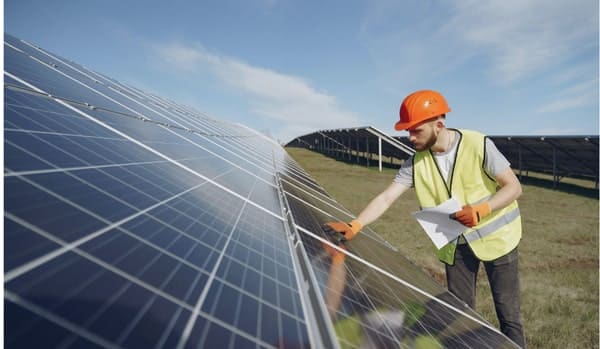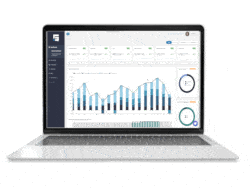The green movement is influencing the commercial real estate sector. Business owners search for buildings compatible with their sustainability goals while construction professionals and real estate agents work together to meet individuals’ demands.
Sustainable commercial real estate may lower greenhouse gas emissions and reduce municipal solid waste. Reducing pollution can improve a brand’s image and lower its utility costs. Real estate agents are enhancing their sustainability measures and the sustainability of their properties to meet eco-consumers’ demands.
The Rise of Sustainable Real Estate
Sustainable commercial real estate signifies two separate sectors. It indicates real estate agents are taking measures to reduce their carbon footprints during sales and improve the eco-friendliness of commercial buildings.
The real estate industry is adopting eco-conscious features to meet global sustainability goals. Environmentalists plan on decarbonizing the built environment to reduce emissions and enhance conservation efforts. Sustainable real estate also helps agents assist eco-consumers.
Researchers found 33% of consumers will buy from companies helping the environment and are willing to pay nearly 40% more for eco-friendly products, services and properties. Real estate agents can optimize their sales by catering to eco-consumers by ensuring their building sales and leases contain the top sustainability features.
Green Real Estate Leases
Real estate agents can improve the sustainability of properties by developing green leases. Green real estate leases contain eco-conscious clauses, which help landlords and tenants meet environmental goals. A few additions to traditional leases may significantly increase their eco-friendliness.
Agents can include air quality standards in buildings’ leases to minimize pollution and health risks. Individuals may cite heating, ventilation and air conditioning system standards to improve energy efficiencies. Decreasing a building’s energy use may minimize unnecessary greenhouse gas emissions.
Green real estate leases may also include alternative transportation options and green cleaning crews. Agents may develop sustainable leases for buildings near bus stations or train stations to minimize transportation emissions. They can also ensure green cleaning services will tidy up around the structure using environmentally safe products.
Real estate professionals can additionally feature a building commission clause aligning with appliance efficiency rates. They may ensure buildings include energy-efficient systems to regulate indoor temperatures, waste and water use.
Green Building Standards: LEED, BREEAM, and What They Mean for Commercial Real Estate Sustainability
Sustainability in commercial real estate isn’t just about energy-efficient features — it’s also about meeting the recognized global standards that define what it truly means to be green. Certifications like LEED (Leadership in Energy and Environmental Design), BREEAM (Building Research Establishment Environmental Assessment Method), and the WELL Building Standard set clear benchmarks for energy performance, water use, and indoor environmental quality.
For example, when a building earns LEED certification, it’s a clear sign that the developer and owner genuinely care about reducing carbon emissions and creating comfortable, energy-efficient spaces. BREEAM certification looks at the bigger picture — everything from where the materials come from to how the property is run over time. And WELL certification focuses on the people inside, making sure workplaces support health, happiness, and productivity every day.
These certifications are not mere seals of quality; they offer genuine business benefits. Green certified buildings are eligible for tax credits, rebates, and quicker permitting, enabling owners to save in the short term while enhancing their reputation. Adhering to these standards ensures compliance with future environmental regulations, preparing developers and investors for the future of commercial real estate, where sustainability will increasingly drive value and demand.
Agents today are searching for buildings with five sustainability features to sell to eco-consumers.
1. Modularly Constructed Buildings
Properties made with modular construction have smaller carbon footprints and produce less material pollution. Builders construct these structures off-site in various sections.
Professionals then assemble their sustainable buildings on-site and improve local air quality. Modular constructors save and reuse excess materials to minimize MSW, reduce resource exploitation and enhance cost savings.
2. Renewable Energy Sources
Eco-friendly sources are becoming a hot commodity in new and old structures. Builders and real estate agents can add solar panels to properties and increase their values. Adding photovoltaic panels to a rooftop significantly decreases energy costs.
Commercial property owners can access the most affordable power supplies using PV panels. Solar energy also improves a building’s resilience during storms and natural disasters. Business owners can increase their cost savings by minimizing electricity loss.
3. Smart Systems
Thermostats reliant on the Internet of Things access real-time weather predictions to regulate indoor temperatures. The systems automatically turn on and off depending on outdoor temperatures.
Smart thermostats connect to business owners’ smartphones to provide remote controls. The green building feature prevents energy loss from heating, ventilation, and air conditioning systems. Individuals can save money on utilities and shrink their carbon footprints using smart thermostats.
4. Rainwater-harvesting Systems
Some companies have large water footprints, which signify natural resource exploitation. Rainwater-harvesting systems collect stormwater in barrels and purify the water for reuse.
Only about 0.5% of Earth’s freshwater sources are available to humanity. Recycling stormwater can prevent resource overuse and help business owners save money.
5. Low-impact Lighting
Real estate agents can increase the sustainability of properties on the market by switching traditional lights with light-emitting diode bulbs. LED lights are significantly more sustainable than other bulbs on the market.
They use about 75% less electricity and last up to 25 times longer. LED bulbs help to reduce MSW and greenhouse gas emissions. Commercial real estate agents can place LED lights in offices and properties to increase sustainability.
While these features are transforming how commercial properties operate, they’re also redefining how investors view value and long-term growth.
Why Sustainable Real Estate Investments Are the Future of Commercial Real Estate
Sustainable property investments are no longer the trend — they’re rapidly becoming the cornerstone of visionary property strategies. As the connection between real estate and sustainability becomes more entrenched, ever-increasing numbers of investors realize that green buildings offer social benefit as well as sound financial performance.
Energy-efficient buildings are more likely to attract high-caliber tenants, stay rented longer, and garner higher rents. And with smart systems, energy-efficient lighting, and solar energy, owners can lower operating costs and raise overall profitability. For investors, that means higher cash flows and property values in the long run.
Sustainability in commercial real estate is also changing how investors think. More and more institutional and private investors are prioritizing ESG (Environmental, Social, and Governance) goals — looking for properties that align with global sustainability standards. Green buildings not only tend to hold their value better but also carry less regulatory risk and attract tenants who care about the same things.
At the end of the day, embracing sustainability isn’t just about being environmentally responsible — it’s about staying ahead in a competitive market. Sustainable real estate investments truly represent the future of commercial real estate, bringing together profit, purpose, and long-term growth in one winning formula.
The Benefits of Green Buildings
Placing more green buildings on the real estate market may improve commercial sustainability. They protect the environment, enhance air quality and lower utility costs. Additionally, these structures reduce natural-resource exploitation and air pollution as well.
Business owners can protect their employees’ health and well-being by investing in sustainable commercial real estate. They can also enhance their eco-consumer appeal by shrinking their carbon footprints.






